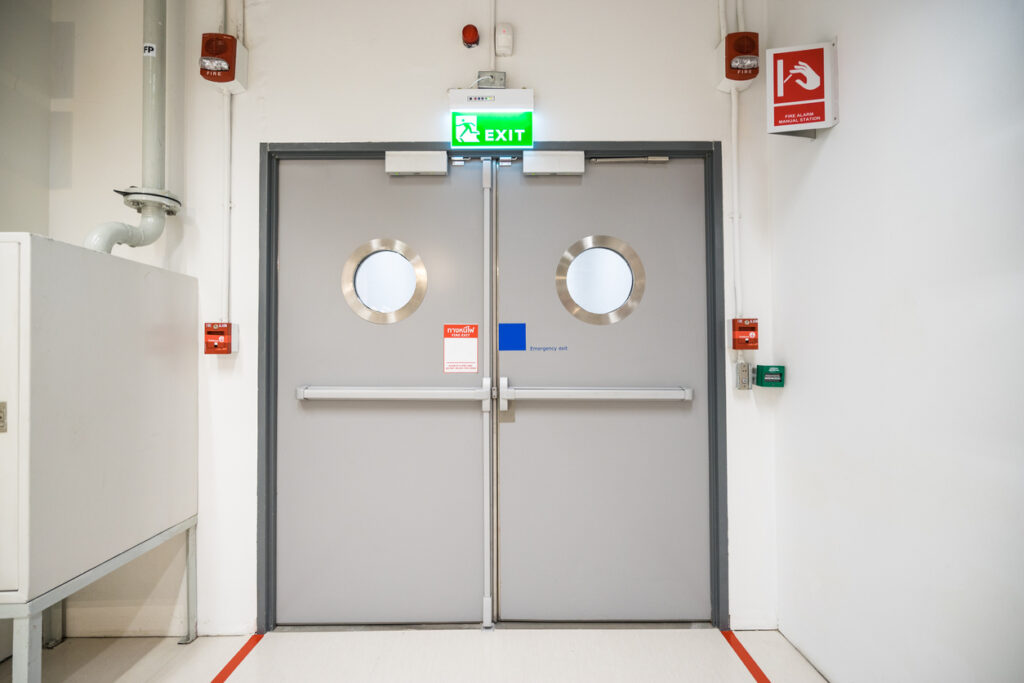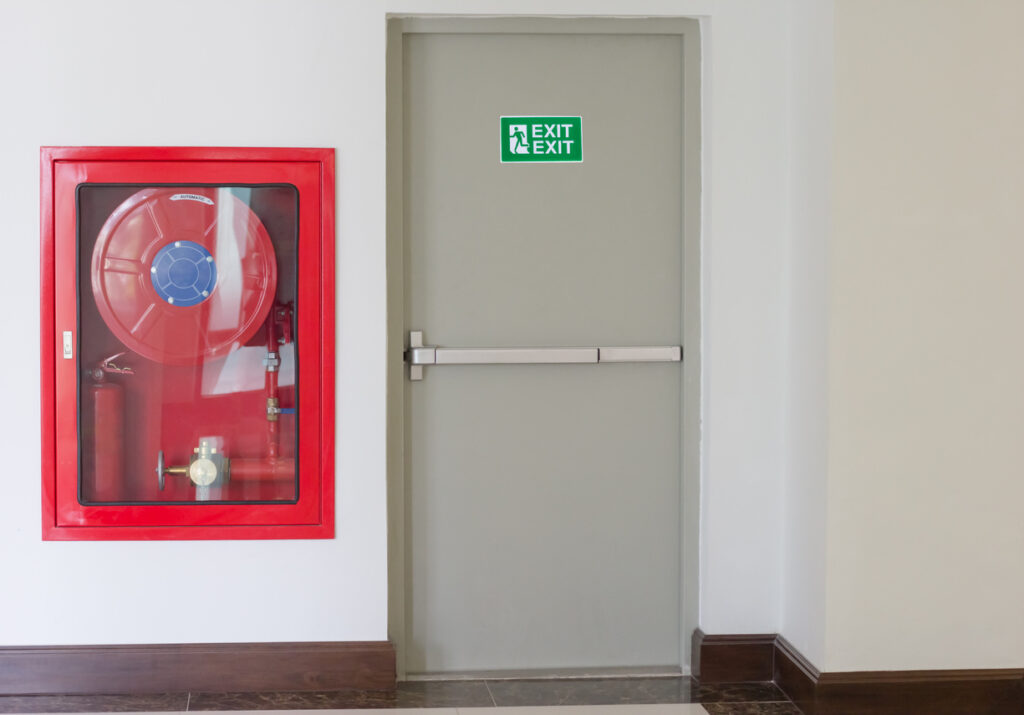Fire doors play a critical role in safeguarding lives and property by preventing the spread of fire and smoke within buildings. Whether you’re a building owner, manager, or simply keen on safety measures, understanding the key features that make a fire door effective is crucial. In this post, we’ll explore the materials, tolerances, and other vital factors that contribute to the efficiency and reliability of fire doors. Join us as we navigate through the essentials of fire door safety, ensuring your premises are protected and compliant.
Quality Materials Help To Save Lives
Quality materials not only enhance the functionality and reliability of fire doors but also significantly contribute to their ability to save lives. Let’s delve into just a few of the materials that play a pivotal role in the construction of effective fire doors, each with its unique properties and benefits.
Metal: Known for their unmatched durability and strength, metal fire doors, particularly those made from steel or aluminium, are champions in withstanding high temperatures. The fire resistance of these materials provides excellent structural integrity during a fire.
Wood: Wood’s natural insulating properties and fire resistance make it a preferred choice in residential buildings and commercial spaces where appearance is as important as safety.
Gypsum: This material’s ability to withstand fire, combined with its relatively lightweight nature, makes gypsum fire doors a practical solution for various applications.
Glass Reinforced Plastic (GRP): GRP doors are a testament to the advancements in fire door technology. The combination of a plastic matrix reinforced with glass fibers results in doors that are not only lightweight and corrosion-resistant but also maintain good fire resistance.
Mineral Core: Featuring materials like perlite or vermiculite sandwiched between metal sheets, mineral core doors excel in fire resistance. These doors are crucial for high-risk areas such as stairwells and exit routes.
The strategic combination of different materials and technologies enables the creation of fire doors that not only meet but exceed safety and functional standards. At Clifton Energy, we understand the critical role that material selection plays in the effectiveness of fire doors, ensuring that our clients get the fire door inspections they need to create safe and functional spaces.

Tight Tolerances Are Hard To Achieve But Well Worth The Effort
The integrity of a fire door is significantly determined by the precise tolerances maintained during its installation and maintenance. A fire door’s performance is not only about the door itself but equally about the minute gap tolerances between the door and its frame. For instance, tolerances as fine as 2-4 millimetres for door-to-frame gaps are recommended. Such stringent measures are crucial because they ensure the door fits snugly without leaving room for smoke or flames to pass through in the event of a fire. While this may seem negligible in everyday use, in the critical moments during a fire, these small gaps can be the difference between containment and catastrophe.
Threshold gaps present another critical tolerance in fire door specifications. Standards set for FD30 or FD60 doors prescribe a gap of 6-10 millimetres from the floor to the bottom of the door, which becomes more stringent for FD30s or FD60s doors, tightening to a mere 3 millimetres. If achieving this gap is not feasible due to flooring or other architectural constraints, supplementary measures such as installing a drop seal or a threshold plate are mandated.
These tolerances will all be checked by a reputable fire door inspector, allowing you to understand how safe your property is. Have your doors checked regularly so that your tolerances are kept in check.
Utilise The Right Signage
The integrity and performance of a fire door can be significantly influenced by its signage and labelling, which is why it’s crucial to prioritise clear and accurate labelling on every fire door. These labels serve as an identifier, detailing the fire door’s fire resistance rating and other vital information that ensures the door meets safety and performance requirements. For instance, a fire resistance label might display ratings like FD30 or FD60, indicating the amount of time the door can withstand fire without failing. This information is crucial for fire safety planning, enabling occupants and safety personnel to understand the protection level each door offers during an emergency.
In addition to the fire resistance rating, the manufacturer’s label plays an equally important role. It typically contains the door’s specifications and a Certificate Data Sheet from the manufacturer, providing a detailed overview of the materials used, installation guidelines, and the door’s design and construction. These labels collectively ensure that everyone from the installation team to the building’s occupants is informed about the door’s capabilities and compliance, paving the way for both effective use and maintenance.

Do Closing Mechanisms And Locks Make A Significant Difference?
Automatic closing mechanisms and locks on fire doors are integral components that contribute significantly to the overall effectiveness of a building’s fire safety strategy. Self-latching mechanisms are a key feature, often standard in fire doors, ensuring that once the door swings shut, it firmly latches into place. This self-latching ability is critical; it guarantees that, in the event of a fire, doors remain closed, sealing off the spread of smoke and flames.
In addition to self-latching mechanisms, the inclusion of sophisticated closing devices such as door closers or spring hinges further enhances a fire door’s functionality. Door closers are engineered to control the door’s closing speed and force, ensuring that the door closes securely and doesn’t remain ajar, which could allow for the dangerous passage of fire and smoke. Some fire doors also feature hold-open devices, which serve the dual purpose of keeping doors open under normal circumstances for convenience or airflow but are designed to automatically close in the presence of fire-related threats.
Make Sure Your Fire Doors Are The Best They Can Be
The journey to understanding what makes a great fire door is complex yet crucial. From the choice of robust materials to the precise engineering of tight tolerances and the vital role of clear labelling and reliable automatic closing mechanisms, each component plays a pivotal part in the door’s performance during a fire. At Clifton Energy, we remain dedicated to providing you with comprehensive insights and guidance on fire door safety.
Remember, a well-constructed, properly maintained fire door is not just a component of your building; it is a guardian of lives and property. We hope this blog empowers you with the knowledge to ensure your fire doors are fitted to serve their purpose – protecting what matters most. Stay safe, and never underestimate the value of a great fire door.